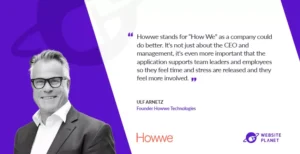In times of uncertainty, companies face the challenge of adapting and achieving changing strategic goals that drive success. Amidst evolving market dynamics, businesses need to maintain focus and clarity to navigate through uncertainty. This is where effective goal management plays a pivotal role. In this article, we will explore the significance of goal management and how it empowers organizations to drive strategic success even in the most unpredictable times.
The Significance of Goal Management: Setting the Stage: Balancing Objectives
A year ago, companies predominantly focused on increasing revenue as a primary objective. However, in the current business landscape, profitability has taken center stage. While the saying “you get what you measure” holds some truth, it can also be misleading without proper focus. Organizations need to strike a balance between their objectives to achieve sustainable success.
The Pitfalls of Too Many Goals
One common pitfall is having too many goals which leads to scattered focus and lack of progress. By streamlining and prioritizing goals, companies can channel their efforts more effectively and achieve meaningful outcomes. Most Important Goals, or MIGs, are the critical battles that each team must win to align with the organization’s overarching business plan. The guiding principle of “focus on less to achieve more” applies here. Ideally, each team should have no more than 2-3 MIGs, ensuring clarity and concentration on the most impactful objectives.
Measurability and Influence
MIGs should be measurable, providing clear progress indicators that help teams stay on track. Moreover, teams have the power to influence their MIGs by identifying activities that directly contribute to goal attainment. This empowers teams to take ownership and drive outcomes that align with strategic objectives.
The Role of Team Leaders
Effective leaders play a vital role in goal management. They understand how their team’s contributions align with the overall company goals. They inspire and guide their teams, ensuring everyone remains focused and motivated to achieve their MIGs. Through effective leadership, teams can unleash their full potential and maximize their impact on organizational success.
Benefits and Implementation of Goal Management: Alignment and Focus
Goal management platforms like Howwe provide organizations with the means to align on the most important goals, channel efforts effectively, and foster a cohesive focus and follow-up. Leaders play a crucial role in explaining the significance of company MIGs and guiding their teams accordingly, ensuring alignment across the organization.
Customizing MIGs
Each organization may have different approaches to defining MIGs, but alignment with critical goals is essential. Regular communication between leaders and managers helps maintain clarity and shared understanding, enabling seamless integration of MIGs into day-to-day operations. In the Howwe way of working, this is done in a short and structured weekly Acceleration Meeting.
Engaging Employees and Ensuring Success
High employee engagement is key to success. By fostering credibility, respect, fairness, pride, and a sense of community, organizations create an environment where employees are motivated to contribute their best efforts. Measurement and goal-setting foster accountability, providing a clear framework for creativity and flexibility, while still maintaining focus on strategic goals. Companies that use Howwe all see an increase in employee satisfaction.
The Power of Digital Applications in Strategy Execution: Realignment at the Activity Level
Companies utilizing digital applications for strategy execution can quickly realign focus at the activity level for all employees. These tools streamline communication, provide visibility, and enable agile adjustments to strategic priorities. Within a matter of weeks, organizations can align efforts towards revised objectives. Without a digital application, realignment can take months or years to implement across all levels of the organization. Once alignment is achieved, the golas are often already obsolete.
Accelerated Results with Enterprise Execution Software
Digital applications expedite the realignment process, delivering faster results compared to traditional approaches. While traditional realignment efforts can take months or even years, digital platforms enable swift adaptations, ensuring that companies stay on track and seize opportunities promptly.
Effective goal management is key to driving strategic success in uncertain times when disruptions and other external factors affect companies and their goals. By establishing clear and measurable MIGs, organizations can align teams, focus efforts, and achieve their most critical objectives. Through open communication and engagement, leaders empower their teams to contribute to the overall success of the company. Embracing the power of goal management, supported by digital applications, enables organizations to navigate uncertainty with confidence, agility, and accelerated results. By leveraging these tools, companies can realign the focus on the activity level for all employees in just a couple of weeks, whereas it would take months or even years without them. This expedites the execution of strategic initiatives, enabling organizations to seize opportunities promptly and stay ahead in dynamic markets.
In today’s fast-paced and ever-changing business environment, organizations must embrace effective goal management practices and leverage digital tools to drive strategic success. By fostering a culture of focus, alignment, and accountability, businesses can navigate uncertainty with resilience and achieve their most important objectives. Invest in goal management and digital applications to empower your teams, drive strategic growth, and stay ahead of the competition.
Blog post written by Katarina Bennich





